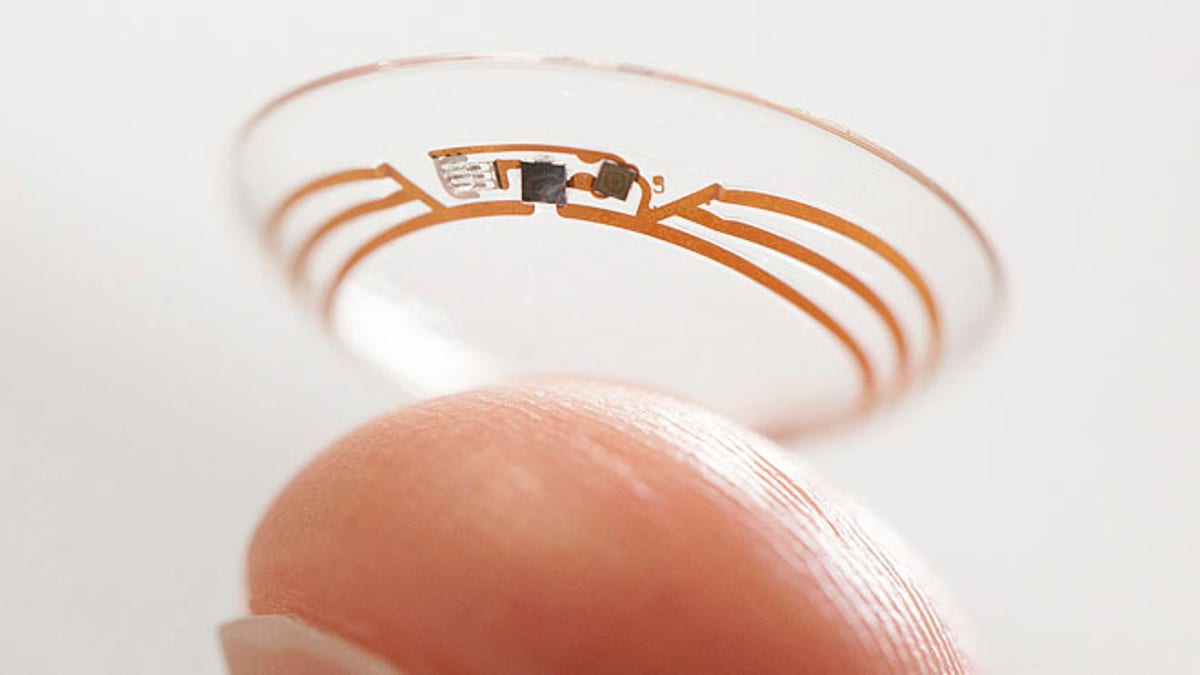
This undated photo released by Google shows a contact lens Google is testing to explore tear glucose. (AP)
Google has announced that it is testing a prototype for a contact lens that would help people with diabetes manage their disease.
In a press release distributed Thursday, the company said that the lens it is designing would measure glucose in tears continuously using a wireless chip and miniaturized glucose sensor. Google says that using the lenses would be a less invasive method of measuring glucose levels than finger-pricking.
It also claims that the more frequent testing would consequently reduce the risks associated with infrequent glucose testing such as kidney failure and blindness.
The contact lenses were developed during the past 18 months in the clandestine Google X lab that also came up with a driverless car, Google's Web-surfing eyeglasses and Project Loon, a network of large balloons designed to beam the Internet to unwired places.
“We wondered if miniaturized electronics — think chips and sensors so small they look like bits of glitter, and an antenna thinner than a human hair — might be a way to crack the mystery of tear glucose and measure it with greater accuracy,” Google said in its press release.
“We hope a tiny, super sensitive glucose sensor embedded in a contact lens could be the first step in showing how to measure glucose through tears, which in the past has only been theoretically possible.”
The chip and sensor would be embedded between two layers of soft contact lens material, while a pinhole in the lens would allow fluid from the surface of the eye to seep into the sensor.
Palo Alto Medical Foundation endocrinologist Dr. Larry Levin said it was remarkable and important that a tech firm like Google is getting into the medical field, and that he'd like to be able to offer his patients a pain-free alternative from either pricking their fingers or living with a thick needle embedded in their stomach for constant monitoring.
"Google, they're innovative, they are up on new technologies, and also we have to be honest here, the driving force is money," he told The Associated Press.
Worldwide, the glucose monitoring devices market is expected to be more than $16 billion by the end of this year, according to analysts at Renub Research.
The Google team built the wireless chips in clean rooms, and used advanced engineering to get integrated circuits and a glucose sensor into such a small space.
Researchers also had to build in a system to pull energy from incoming radio frequency waves to power the device enough to collect and transmit one glucose reading per second. The embedded electronics in the lens don't obscure vision because they lie outside the eye's pupil and iris.
Google is now looking for partners with experience bringing similar products to market. Google officials declined to say how many people worked on the project, or how much the firm has invested in it.
An early, outsourced clinical research study with real patients was encouraging, but there are many potential pitfalls yet to come, said University of North Carolina diabetes researcher Dr. John Buse, who was briefed by Google on the lens last week.
"This has the potential to be a real game changer," he said, "but the devil is in the details."
While excited about their prototype, Google warned that there is still a lot more work that needs to be done before it could be turned into a useable product.
The Associated Press contributed to this report.




















